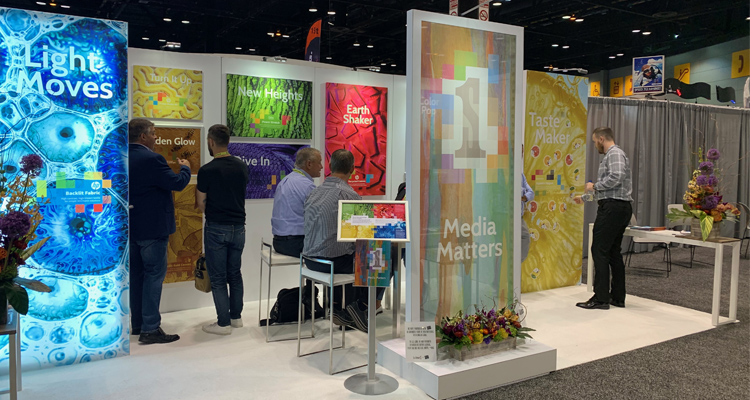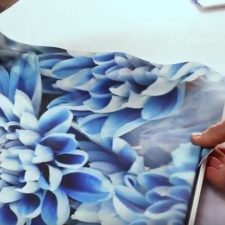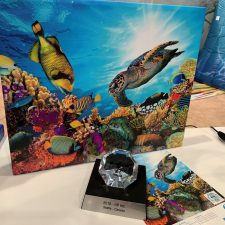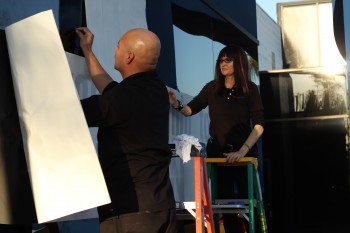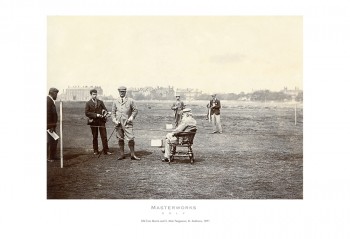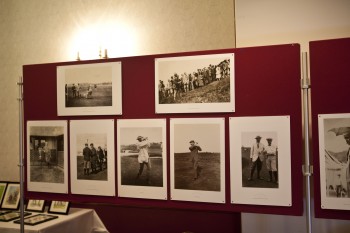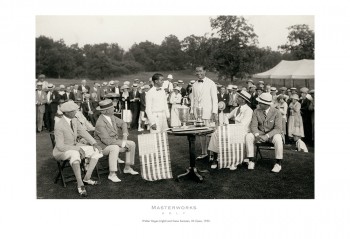Our teammates at our parent company, S-One, made their debut at GlobalShop @ RetailX in Chicago last month, showcasing media options hand-selected for retail environments.
Fabrics were a huge trend all throughout the show, and S-One highlighted some tried-and-true favorites as well as brand-new to the market options.
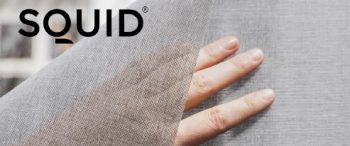 “Fabric was everywhere, and it’s always going to continue to trend,” says sales rep Matt Radauscher. “The guys who don’t have dye-sub yet were happy to hear they had options to print fabrics on latex.”
“Fabric was everywhere, and it’s always going to continue to trend,” says sales rep Matt Radauscher. “The guys who don’t have dye-sub yet were happy to hear they had options to print fabrics on latex.”
Our team showcased HP Durable Backlit Fabric, a lightweight option suitable for SEG frames that’s latex-compatible. We also brought the brand-new adhesive fabric, Squid, which generated a ton of buzz. The fabric’s fibers are finished on one side with a special adhesive that is designed for windows. Squid can be printed or used alone to create privacy, block out the sun’s rays and/or display brand messaging. It’s an elegant solution for high-end retail and corporate environments. Stay tuned for more info to come soon!
 Throughout the show floor, we were excited to see some emerging trends, most of which played around with dynamic color and customization. SuperColor Digital featured printable blackout fabrics that were enhanced with lighting features that actually changed the colors of the graphics (see photo).
Throughout the show floor, we were excited to see some emerging trends, most of which played around with dynamic color and customization. SuperColor Digital featured printable blackout fabrics that were enhanced with lighting features that actually changed the colors of the graphics (see photo).
We noticed that many of the exhibits focused on brick-and-mortar retail’s current challenge: competing with ecommerce by using dynamic, sometimes over-the-top displays to create a memorable in-store experience.
“When looking at the booth designs, nearly every one of them had some sort of electrical element in the displays themselves,” says S-One Marketing Director Terry Lynn Belzer. “Whether they were blow-up fixtures, floor fixtures or even animal displays with eyes that lit up. There was also a lot of focus on tactile experiences throughout the show.”
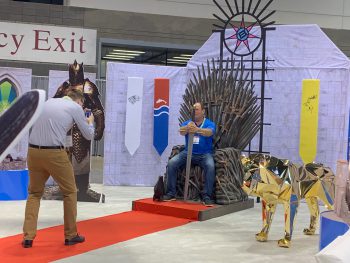 There was even an “Instagrammable” moment with a Game of Thrones-inspired display with a giant throne and sword that was a photo opp just waiting to happen.
There was even an “Instagrammable” moment with a Game of Thrones-inspired display with a giant throne and sword that was a photo opp just waiting to happen.
Colorful, hyper-customized walls, windows, floors and even ceilings showcased the power of print throughout the exhibits at GlobalShop @ RetailX. To get a closer look at the materials that S-One showcased, please visit our RetailX page for product info or give one of our retail specialists a call at 800-453-9538.

